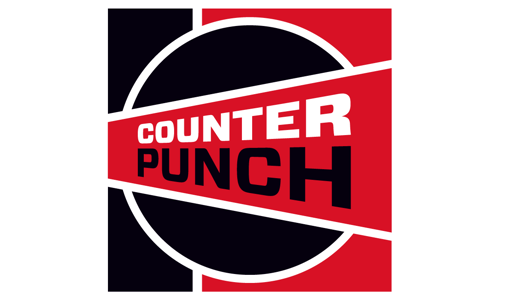The US government is pay-to-play – and drug lobbyists are buying a lot of playing time.
Pharmaceutical companies claim that the government shouldn’t negotiate lower drug prices because losing those excess profits will hurt innovation, but they can pour record amounts of money into lobbying the government. The premier lobbying group for Big Pharma – the Pharmaceutical Research and Manufacturers of America (PhRMA) – spent over $20.6 million on lobbying the federal government in the first half of 2025, including more than $7.6 million in the second quarter.
Pharmaceutical and health products companies overall spent $105.4 million in the second quarter of 2025 and $226.8 million for the first half the year. This lobbying boom is an extension of growing spending over the last few years, as the industry spent around $22 million more than it had in the first half of 2024.
Lobbying literally means the act of influencing government actions, and PhRMA’s spending successfully reaped rewards in the recently signed reconciliation packagethat President Trump coined the “One Big Beautiful Bill” (OBBB).
The United States spends far more than other countries for the same prescription drugs. Compared to the 38 countries in the Organisation for Economic Co-operation and Development (OECD) – which are mostly other democratic, developed nations – US prices were roughly three times as high for the same products. Estimates haveshown two-thirds to three-fourths of global pharmaceutical profits come from the US alone. The pharmaceutical industry achieved two massive wins in the OBBB to help ensure that this price gouging of Americans continues.
What PhRMA Won in the OBBB
Unlike other countries, the US government doesn’t use its significant purchasing power to negotiate and lower prices. However, the 2022 Inflation Reduction Act (IRA) introduced very limited drug negotiation in the Medicare program for the 50 drugs with the highest amount of spending in Medicare Parts B and D each. More specifically, the IRA allows Medicare to negotiate prices for a whopping 10 drugs starting in 2026, adding another 15 in 2027, another 15 in 2028, and 20 in 2029 and beyond.
The OBBB increased the number of drugs exempted from the limited price negotiation program, which the Congressional Budget Office estimates will save the industry $5 billion over ten years. Before the OBBB, drugs that the Food and Drug Administration (FDA) approved to treat patient populations of under 200,000 for a single rare disease – known as orphan drugs – were exempt from price negotiation.
The OBBB tweaked the law so that drugs approved to treat multiple rare diseases are also exempt. This change is significant, as pharmaceutical companies often chase orphan drug designations for their products because they provide significant financial incentives like tax credits, fee exemptions, grants, and market exclusivities. Orphan drugs are also significantly more expensive than nonorphan drugs. One analysis of 242 FDA-approved orphan and nonorphan drugs from 2017-2021 found that the median cost of orphan drugs was roughly $219,000 compared to $13,000 for nonorphan drugs.
The other significant win for the pharmaceutical industry was the exclusion of a supposed Trump policy to lower drug prices. In May 2025, President Trump issuedan executive order claiming to create a most-favored-nation policy to lower drug prices. Essentially, such a policy would set the prices of drugs in the US to the lowest level paid by comparable countries. However, President Trump issued a similar executive order in his first administration, which the courts struck down for violatinglegal procedures.
To put President Trump’s executive order into law, Representatives Ro Khanna (D-CA), Anna Paulina Luna (R-FL), Marcy Kaptur (D-OH), and Andy Biggs (R-AZ) introduced the Global Fairness in Drug Pricing Act in May to codify key provisions of the executive order. Yet, the OBBB did not include this bipartisan policy. The pharmaceutical industry won out again.
The industry’s lobbying successes do not end there. Among its other wins, the OBBB nor any other piece of legislation has included Department of Health & Human Services (HHS) Secretary Robert Kennedy’s desire to rein in direct-to-consumer advertising. Currently, the United States and New Zealand are the only two countries that allow pharmaceutical companies to spend money directly advertising their drugs to consumers. Additionally, companies are financially incentivized to spend big on such advertising as these expenditures are exempt from federal taxes. Secretary Kennedy has openly endorsed ending this tax exemption and Senators Josh Hawley (R-MO) and Jeanne Shaheen (D-NH) have introduced the No Handouts for Drug Advertisements Act to do so.
Senators Bernie Sanders (I-VT) and Angus King (I-ME) also introduced legislation to ban such direct-to-consumer advertising outright, a policy that Secretary Kennedy has repeatedly advocated for. Unsurprisingly, Congress has not passed such a ban.
Why do drug companies spend millions on lobbying the federal government when they also price-gouge Americans so that they reap every last penny while willingly and knowingly denying life-saving treatments to patients? The same question applies to the tens of millions of dollars the industry spends through campaign contributions to members of Congress.
The answer is clear: Influence. Companies know that by spending more money to get favorable candidates elected, and by bombarding elected officials, their staff, and regulators with their priorities, they can reap massive profits.
Spending millions on lobbying and campaign contributions can influence policy that creates billions in returns – either from changes in public policy or by maintaining the status quo. Demonstrating the magnitude of this dynamic, one study found that every $1 corporations spent on lobbying for a tax holiday provision in the American Jobs Creation Act of 2004 yielded $220 – a 22,000 percent return on investment. For many pharmaceutical companies and other corporate interests, buying political power is arguably the most lucrative investment they can make.
This first appeared on CEPR.
The post How Big Pharma Bought Government to Protect its Racket appeared first on CounterPunch.org.
From CounterPunch.org via this RSS feed


